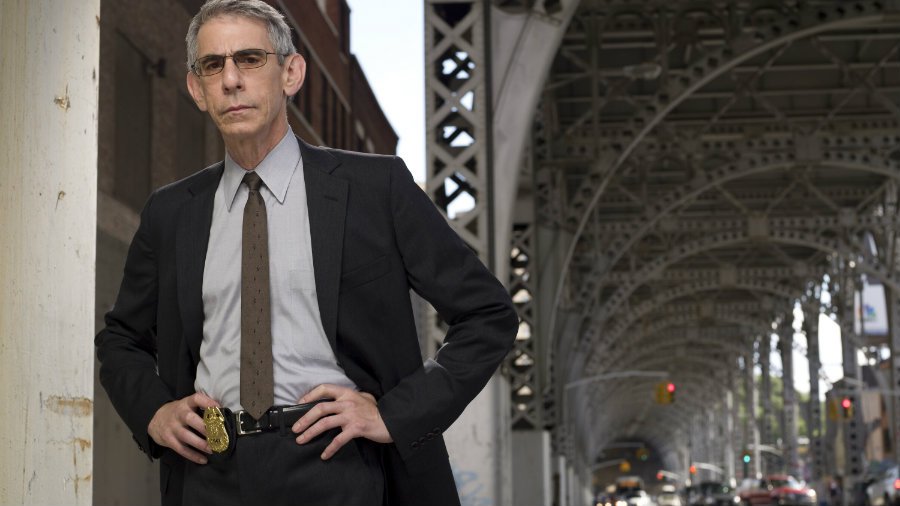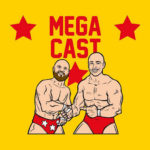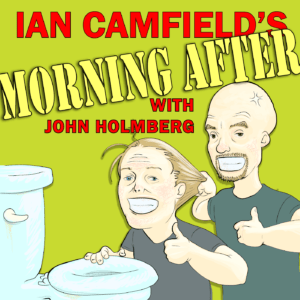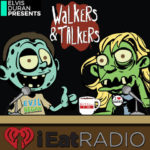
When our “Digital Dot Connector,” Seth Resler, joined us in 2015, we knew his stint working in Silicon Valley was time well spent. For Seth – a former program director and air talent, his sojourn to the world of technology served as a much-needed break from broadcast radio.
It turned out Seth’s “vacation” provided perspective on the radio business that most of us could benefit from. He now looks at content, distribution, and marketing through a different lens.
And in today’s post, Seth examines some of the traditional mores that radio stations have followed for decades. In buildings where there are four, five, or more stations, talent tends to stay in their lanes. In today’s post, Seth pinch hits for me, asking some key questions about how radio air personalities could extend their brands by connecting with their fraternity brothers and sisters down the hall. – FJ
 Richard Belzer’s famous character, Detective John Munch, holds the record for appearing on the most television series: 10 different shows on five different networks, including Homicide: Life on the Street, Law & Order, Law & Order: Special Victims Unit, Law & Order: Trial By Jury, The X-Files, Arrested Development, The Wire, The Beat, and 30 Rock.
Richard Belzer’s famous character, Detective John Munch, holds the record for appearing on the most television series: 10 different shows on five different networks, including Homicide: Life on the Street, Law & Order, Law & Order: Special Victims Unit, Law & Order: Trial By Jury, The X-Files, Arrested Development, The Wire, The Beat, and 30 Rock.
Belzer’s popular Munch character has also made cameos on Paul Shaffer’s 1993 album The World’s Most Dangerous Party, in the 2016 Spider-Man/Deadpool #6 comic book, and even in Muppet form on Sesame Street.
I love these television crossover events. I’ve loved them since the Harlem Globetrotters first appeared in my Scooby Doo cartoons. To me, there’s just something exciting about Urkel dropping in on the Tanners, the Griffins running into Homer and Marge, or Buffy heading to L.A. to help Angel fight evil law firms. Like mashups between two very different songs, crossovers generate buzz and interest in the artists whose music is brought together, often in unusual but interesting circumstances.
In any medium, it’s exciting to see the characters I love interact with other characters at are very familiar to me, but unfamiliar to them. Marvel has crafted an entire universe around this concept, while the best television series finale in history built a joke around it. (Of course, I’m talking Newhart.)
So why doesn’t radio do similar crossover events?
Multiple times in my career, I have found myself working at a station that was part of a larger cluster. Behind the scenes, I’d interact with employees from the other stations, but never over the airwaves. Every station behaved as if it were the only radio station in the world, when in reality many of our rock station listeners probably had our classic rock sister station programmed into the very next preset button on their car radios.
Our stations not only shared owners; in all likelihood, we also shared a lot of listeners. Why didn’t we acknowledge that fact through cross-promotion? After all, wouldn’t we rather have our listeners flipping over to our sister stations when a song they didn’t like came on instead of tuning to a station owned by another company?
I love the idea of radio crossovers for the same reason that I love television crossovers: It’s cool hearing my favorite personalities in situations that break from the norm. With the Internet, we now have opportunities to create content featuring crossovers – or mashups – that we never had before.
If Taylor Swift comes to town, there’s no reason why DJs from the Top 40 and Country stations in a cluster can’t team up for a backstage interview in an online video. When you look beyond music-related content, there are even more opportunities. For example, DJs from two different stations could team up to create a podcast series about local wineries or the minor league sports team.
I see three ways that radio crossovers could work:
 Crossing Dayparts: In our business, it’s common to have colleagues whose paths rarely cross because they come into the station at different times. But the rise of on-demand media allows them to collaborate in ways that weren’t possible before. For example, at KISW in Seattle, Steve Migliore from the station’s morning show and Ted Smith from the station’s afternoon show come together to host the Mega Cast podcast. The two of them enjoyed each others company but rarely had an opportunity to work together, so they created one.
Crossing Dayparts: In our business, it’s common to have colleagues whose paths rarely cross because they come into the station at different times. But the rise of on-demand media allows them to collaborate in ways that weren’t possible before. For example, at KISW in Seattle, Steve Migliore from the station’s morning show and Ted Smith from the station’s afternoon show come together to host the Mega Cast podcast. The two of them enjoyed each others company but rarely had an opportunity to work together, so they created one.
Crossing Stations: Two stations in the same market could find a way to collaborate by creating digital content. The advantage is obvious – it doubles the promotional channels for this content: two websites, two email lists, two Facebook pages, etc. While it’s easy to see where stations that share audience could collaborate — the Rock and Classic Rock stations, for example — the more outlandish crossovers, the better: Country and Hip Hop or Alternative and Top 40.
 Ian Camfield, the midday guy at Hubbard’s ALT AZ in Phoenix works in the same building as KUPD’s “Morning Sickness” show starring John Holmberg. Camfield began spending time behind the mic on Holmberg’s show, and it’s now morphed into a regular appearance. The two enjoy sitting in the same studio and schmoozing so much they started a podcast, The Morning After. With Brit Camfield at an Alternative station and Holmberg entertaining Phoenix on the market’s Rock station, they are very much the odd couple — and that’s one of the reasons it works.
Ian Camfield, the midday guy at Hubbard’s ALT AZ in Phoenix works in the same building as KUPD’s “Morning Sickness” show starring John Holmberg. Camfield began spending time behind the mic on Holmberg’s show, and it’s now morphed into a regular appearance. The two enjoy sitting in the same studio and schmoozing so much they started a podcast, The Morning After. With Brit Camfield at an Alternative station and Holmberg entertaining Phoenix on the market’s Rock station, they are very much the odd couple — and that’s one of the reasons it works.
(By the way, back in the day, stations often flipped airstaffs on April Fools Day. Imagine the Rock station flipping staffs with the NPR or Classical station.)
Crossing Markets: So many radio companies own stations of the same format in different cities that it makes sense to share content across markets. iHeart Radio has done this well with its awards show and its Las Vegas concert festival. I’ve also seen radio companies produce blog content that can be shared across multiple stations. Yet, outside of syndicated radio shows, this rarely happens with on-air personalities.
 One way this could work is by emulating television spin-offs. Mork & Mindy and Laverne & Shirley were two popular shows that started with characters which first appeared on Happy Days. We’ve already seen some broadcasters use the spinoff model to create digital content. For example, several members of Elvis Duran’s morning show have launched their own podcasts under the heading “Elvis Duran Presents.”
One way this could work is by emulating television spin-offs. Mork & Mindy and Laverne & Shirley were two popular shows that started with characters which first appeared on Happy Days. We’ve already seen some broadcasters use the spinoff model to create digital content. For example, several members of Elvis Duran’s morning show have launched their own podcasts under the heading “Elvis Duran Presents.”
Imagine another way this spinoff model could work: Let’s say Acme Broadcasting has a popular morning show in Metropolis, and it hopes to eventually bring that show to one of its stations in Gotham. The Metropolis morning show could record a music news segment or be a part of a recurring bit on another Gotham morning show to warm the audience and the market up. Then, when it comes time to start simulcasting the Metropolis morning show on another station in Gotham, it already has some familiarity, increasing its chances of success.
Of course, the challenge with creating these types of crossovers is that radio companies are set up in a way that encourages programmers to be territorial. The incentives for PDs and air talent are usually based on the ratings for their own stations, which inherently creates fiefdoms. Why would a Metropolis PD direct listeners to content from the Gotham station if she doesn’t get credit for it?
To take full advantage of the crossover opportunities that on-demand digital content make possible, we may have to rethink the way we structure and incentivize our staffs. Radio stations are no longer standalone players in their markets. Instead, let’s acknowledge that our listeners tune in multiple stations. And let’s use that as an opportunity to give them something exciting by pairing up on-air personalities in ways that they don’t expect — and that is out of context.
Putting talent in unexpected places isn’t much different than seeing favorite athletes or movie stars on shows like Dancing With The Stars. It’s great for fans of both personalities and shows.
Crossovers generate buzz and help air talent expand their “tents.”
- A Simple Digital Treat to Thank Your Radio Listeners This Thanksgiving - November 13, 2023
- Interview Questions When Hiring Your Radio Station’s Next Digital Marketing Manager - November 6, 2023
- A Radio Conversation with ChatGPT: Part 2 – Promotions - October 30, 2023




Seth – a great idea and I think you are correct. The Harlem Globetrotters/Scooby Doo reference was perfect! Even the Simpsons/Family Guy cross episode was compelling (if not that good a story)
This was one of our goals when we started with webisode series “This Is Cat Country” at WCTK/Providence. We are a stand-alone – so our cross episodes include different people from different day-parts and across the office.
https://youtu.be/KqXMCeNv0Lc
I love it! Also, I miss Providence. Tell everybody that I said hello!
That was fantastic, Bob! Loved the video! I’m 3,000 miles away and I fell in love with Cat Country in those 4+ minutes. I can only imagine how endearing the station is with its fans given the kind of fun, creative promotions such as “This is Cat Country”! Congratulations on your well-deserved success and thanks for the reminder to the rest of the industry on how radio CAN still connect with its listeners! Great job!
Our Radio-One cluster in Philadelphia does something similar. One of our Inspirational Praise 107.9 weekend personalities, Jermaine Dolly, who is also a recording artist, makes regular appearances on our UAC WRNB 100.3 weekday morning show, performing his own Gospel versions of popular R&B songs. So far it’s been very successful, too. I agree that it’s a nice idea to give listeners another way to engage with their favorite personalities and add the much-lacking (these days) element of surprise.
Very cool! I’m excited to hear that this is happening on some stations!
There certainly could be opportunities for “crossover” Seth-but it’s got to be well thought out to benefit both entities. Crossover personalities? Can we benefit both? Crossover stations? Can we benefit both? At best we can hope that a listener leaving station “A” will remember station “B”. In 1980 Buffalo we did our own “crossover”. WKBW was a legendary Top 40 station, WGR was a legendary AC/Full Service station. We did an April 1st stunt that worked-for (we think) both stations, each owned by different companies. At 8am on April 1st, WGR was promoting the introduction of “The Second Channel” on AM. This was the time when we were eager to promote AM Stereo. WKBW’s morning genius Dan Neaverth had his “engineer” (Artie-an alter-ego sidekick) re-wiring the studio. At the prescribed moment, ‘GR turned on the “second channel” and ‘KB punched up a button where both morning guys appeared on each others stations at the same time. It was a fun hour of radio. Stan Roberts had done mornings at WKBW and Danny was (at that point) scoring big ratings. To hear the two competitors sharing airtime with each other was magic. At one point we were going to try the “AM Stereo” bit– asking listeners to tune one radio in their house to 550, and the other to 1520. Originating from the WGR studios we used “Downtown” by Petula Clark as the test song. Plenty of separation in the stereo version (this was 1980 remember)- and that’s what was fed to the WGR transmitter. ‘KB got the same song, but by Mrs. Miller-a 60 something out of tune housewife. It was pandemonium. We got to promote each others’ Spring book promotions on each others’ station-‘KB had tickets to Disney World. ‘GR had…. $100,000!! Did anyone win that book ? Spring 1980 showed WGR as #3 in the market (behind market leader WBEN and country WYRK) and WKBW was #4. Three of the Top 5 stations were AM music stations. In 1980. It was a memorable concept and both of the morning guys bought into it-and having lunch with ‘KB’s GM and PD and our GM and me….a bit of awesome radio magic. There are many reasons/premises where this can work-but the question is…how will it fly in this corporate/consolidation climate? Radio stopped being competitive…and if it is again-we can get creative.
Thanks for sharing the great story, Dave!
As for how it flies with corporate consolidation, I think this should actually make crossovers easier. Under corporate consolidation, it’s not a question of how “two entities” (the individual radio stations) can benefit, but a question of how one entity (the overarching company) can benefit. A crossover between a leading station and a lagging station in a market might have a lopsided benefit favoring the laggard, but if the strong station’s star power can lift up the weaker station, the company benefits overall.
For a year I was fortune enough to fill in on mornings at the world famous CHUM FM in Toronto. All while still hosting my “day gig” as co-host of The Rush on Newstalk 1010. Some weeks I’d actually do both shows.
A couple things stand out. 1- Listeners had ZERO problem with me doing double duty. Emails typically said “Its awesome waking up with you AND driving home with you!”
2 – Prep crossed over surprisingly well despite the different formats (Newstalk & Adult Pop) Often a segment would be done in the morning then fine tuned and improved for drive, & vice versa. And what a great way for companies to let talent learn new skills and sharpen other ones. Here’s a couple links showcasing both shows.
Great article Seth!
Jay Michaels
Toronto
104-5 CHUM FM
https://soundcloud.com/roger-marilyn-podcast/roger-marilyn-tuesday-july-3-2018
The Rush – Newstalk 1010
https://soundcloud.com/the-rush-with-ryan-and-jay/the-facebook-cobbler
Thanks, Jay! It’s not surprising: when people like something, they want more of it! They say the best lead-in for any television show is another episode of the same television show, which explains those 12-hour marathons of Shark Tank on cable TV. So of course people want to hear you going to and coming home from work!
Doing fill in overnights in 1963 (Syracuse WNDR) I loved hearing George Brewer when I got off the air and he was mornings on WOLF. George had a character voice partner (Sam) and I discovered I could mimic that voice perfectly. So I had Sam come in and visit me once in a while around 5:15AM, hoping that Brewer was listening. One morning, I told Sam if he didn’t leave now, he would have to pedal his bike all the way across town and he’d be 20 minutes late for work. At 6AM, raced out to my car, turned on George and NO SAM! “Wonder where Sam is today, he’s never late,” laments George. At 6:20, in comes Sam, out of breath apologizing for being late because, “I had to pedal my bike all the way across town!” I called George, we had lunch that day and had a great time We both left Syracuse shortly after that and sort of stayed in touch but sadly George left us at a very young age. Very bright, talented guy. I still miss him.
Great story, Rick! Thanks for sharing it.